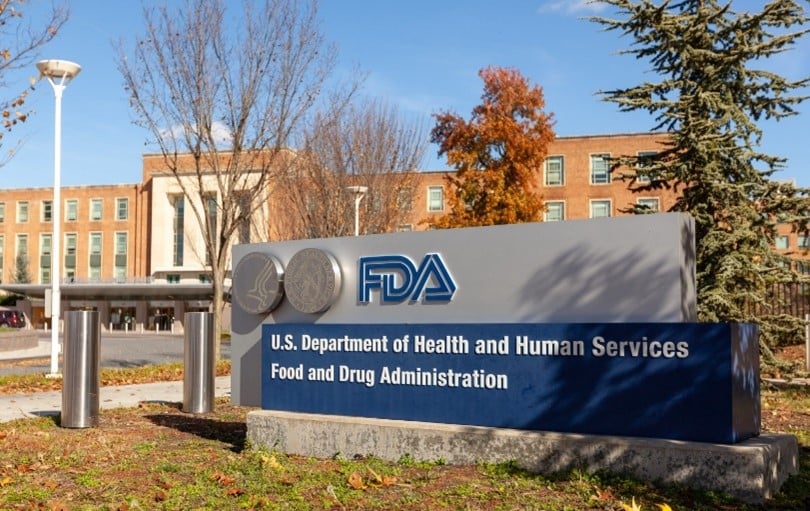Broughton Chief Regulatory Officer, Dr. Nveed Chaudhary shares his thoughts on the latest Food and Drug Administration (FDA) updates including Marketing Denial Orders (MDOs) for flavored e-liquids...
New Faces, New Focus: How FDA’s 2025 Shake-Up Could Redefine Tobacco Regulation
Nicotine

Jul 30, 2025 | Published by Broughton
Nicotine, Regulatory
Since January 2025, the regulatory landscape for tobacco and nicotine products in the United States has experienced one of the most significant transformations in recent memory. Following the inauguration of a new administration, the U.S. Food and Drug Administration’s (FDA) Center for Tobacco Products (CTP) has undergone substantial changes to its leadership, staffing, and strategic direction. While this period has been marked by disruption, it may yet prove to be the starting point for long-awaited reform.
A Leadership Transition Marked by Uncertainty
Just before the transition of power, the FDA granted marketing authorisation to 20 ZYN nicotine pouch products. This decision was widely regarded as a breakthrough for the modern oral category and a sign that CTP was beginning to advance decisions on reduced-risk products. However, any sense of continuity was short-lived.
In early February, thousands of probationary federal employees across public health agencies, including the FDA, Centres for Disease Control and Prevention (CDC), and the National Institutes of Health (NIH), were dismissed as part of a broader federal workforce reduction strategy. By 1 April, over 100 staff members at CTP had been placed on administrative leave, and entire divisions within the Office of Compliance and Enforcement (OCE), the Office of Health Communication and Education (OHCE), and the Office of Regulations (OR) had been dissolved (although OR had since been reinstated).
Key leadership changes included:
- Dr Brian King (CTP Director) – placed on administrative leave and subsequently resigned
- Dr Matthew Farrelly and Dr Todd Cecil – reassigned and placed on administrative leave from their roles within the Office of Science
These measures were implemented in line with the White House’s “Department of Government Efficiency” Workforce Optimisation Initiative, which required agencies to submit reorganisation and reduction in force (RIF) plans, eliminate non-statutory functions, consolidate workspaces, and observe a one-for-four hiring freeze.
New Vision, New Appointments
Amidst this restructuring, the appointments of two key figures signalled a potential change in strategic direction.
Dr Martin Makary was confirmed as the 27th Commissioner of the FDA. In his early public remarks, including those delivered at the Food and Drug Law Institute (FDLI) Conference in May, Dr Makary outlined a regulatory philosophy based on scientific excellence, practical reform, and increased enforcement. He expressed full support for the agency’s artificial intelligence (AI) strategy aimed at expediting product application reviews and introduced the National Priority Voucher programme to fast-track high-impact public health submissions. This approach may offer a blueprint for accelerating the review of reduced-risk nicotine products.
At the CTP, Dr Bret Koplow was appointed as Acting Director. His leadership marks the beginning of a transitional phase as the Centre aims to stabilise operations and refine its regulatory approach. At FDLI, CTP’s interim leadership provided early insights into its post-RIF direction.
From Disruption to Direction
Dr Ben Apelberg, Acting Director of the Office of Science, reaffirmed the use of the “Appropriate for the Protection of Public Health” standard in product evaluation. He emphasised the need for a holistic review process, incorporating factors such as youth initiation, nicotine delivery, flavours, product design, and marketing. While acknowledging that randomised controlled trials are ideal, he noted the value of diverse data sources, including actual use studies and abuse liability assessments. Dr Apelberg also acknowledged the potential role of reduced-risk products in helping adult smokers switch, though noted the agency’s limited remit in addressing public misinformation.
On the enforcement front, John Verbeteen, Acting Director of OCE, highlighted ongoing collaboration with the Joint Federal Task Force and reported an increase in the seizure and destruction of unauthorised tobacco imports. He also outlined a dual strategy: continuing strong enforcement while supporting the authorisation of compliant, reduced-risk products to provide legal alternatives for adult smokers.
Together, these perspectives indicate a positive shift in tone from CTP leadership, with an emphasis on regulatory clarity and product authorisation rather than default opposition.
A Strategic Inflexion Point
The first half of 2025 has been turbulent, but it may mark the start of a more pragmatic era for U.S. tobacco regulation. With leadership changes stabilising and renewed communication from CTP, there is cautious optimism that the agency may begin to support responsible innovation more actively.
Nicotine pouch products are continuing to gain traction in both U.S. and global markets. Heat-not-burn technologies are being reintroduced, while manufacturers of electronic nicotine delivery systems (ENDS) are exploring biometric and secure device-user pairing technologies aimed at reducing youth access. These advances raise important questions around how the FDA evaluates emerging product formats, particularly those with the potential to deliver harm reduction at scale.
Commissioner Makary’s recent initiatives, including the deployment of AI-based review system ELSA and the Priority Voucher programme, suggest a forward-leaning regulatory model that CTP could adopt. By embracing these tools, the CTP has an opportunity to address its PMTA backlog, accelerate scientific review, and provide more timely pathways to market for products that meet appropriate public health standards.
As the second half of 2025 unfolds, industry stakeholders will be watching closely to see whether the changes within the FDA and CTP mark a true reset or merely a reshuffling of the status quo.
For more information on how Broughton can support your PMTA submission, arrange a meeting with our regulatory expert here.



